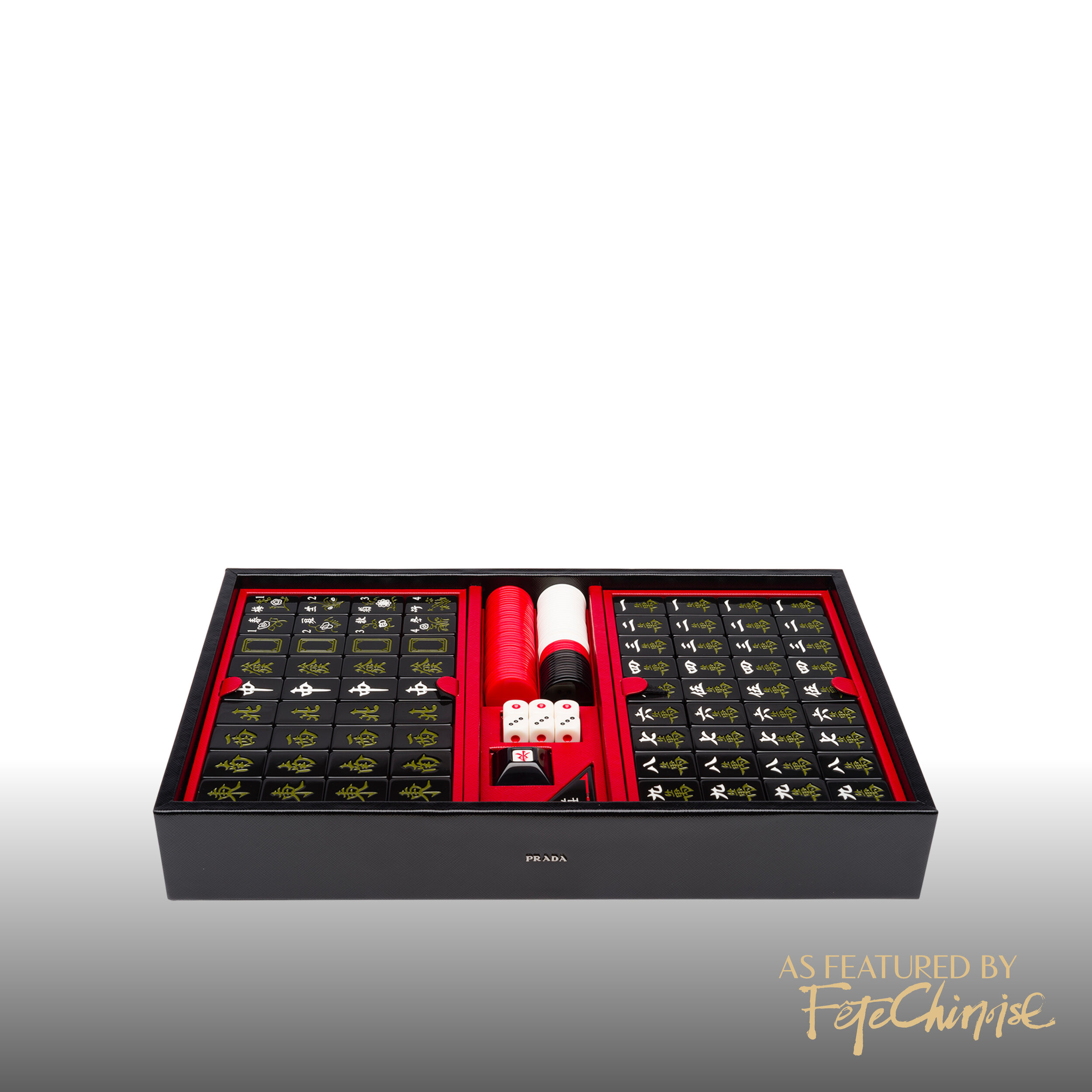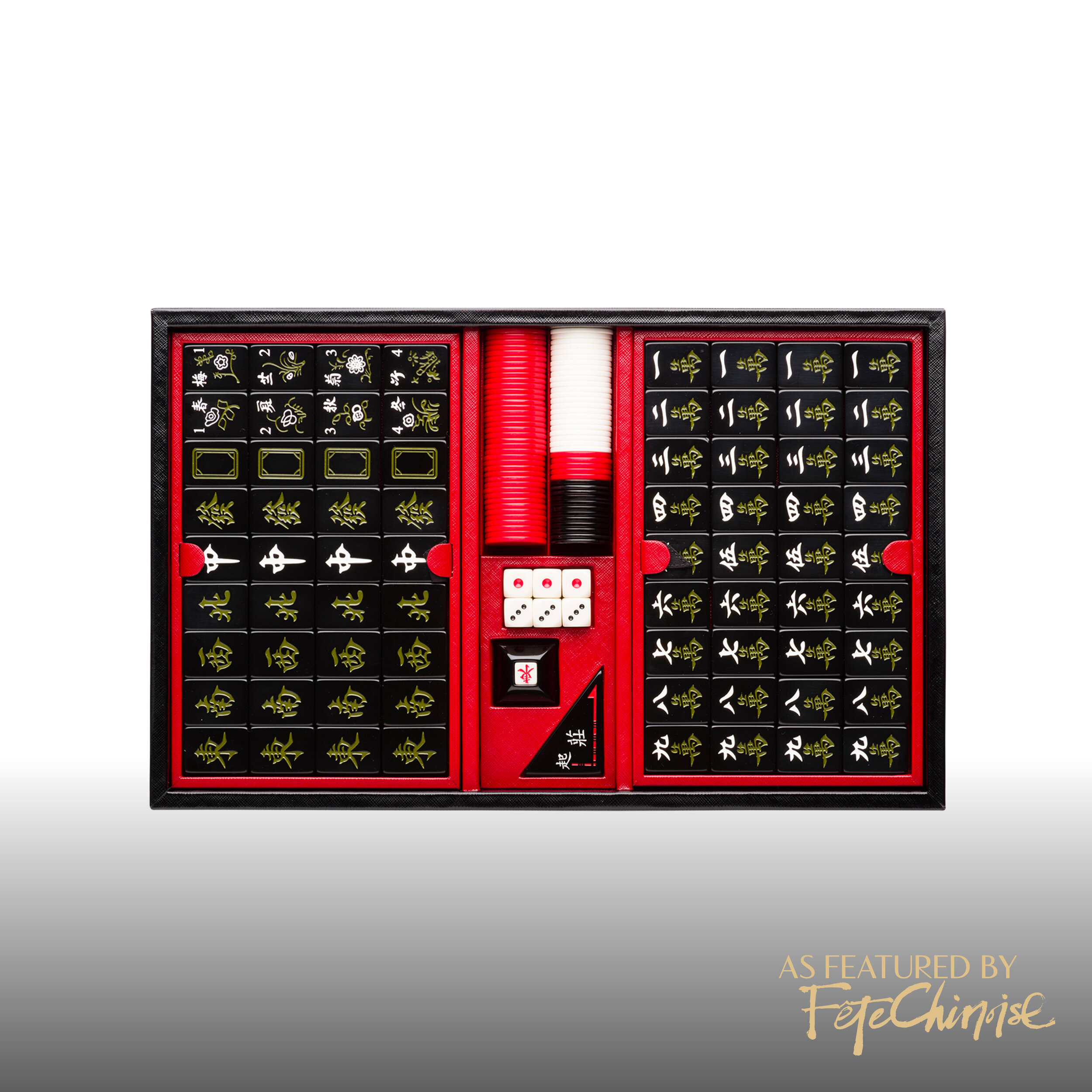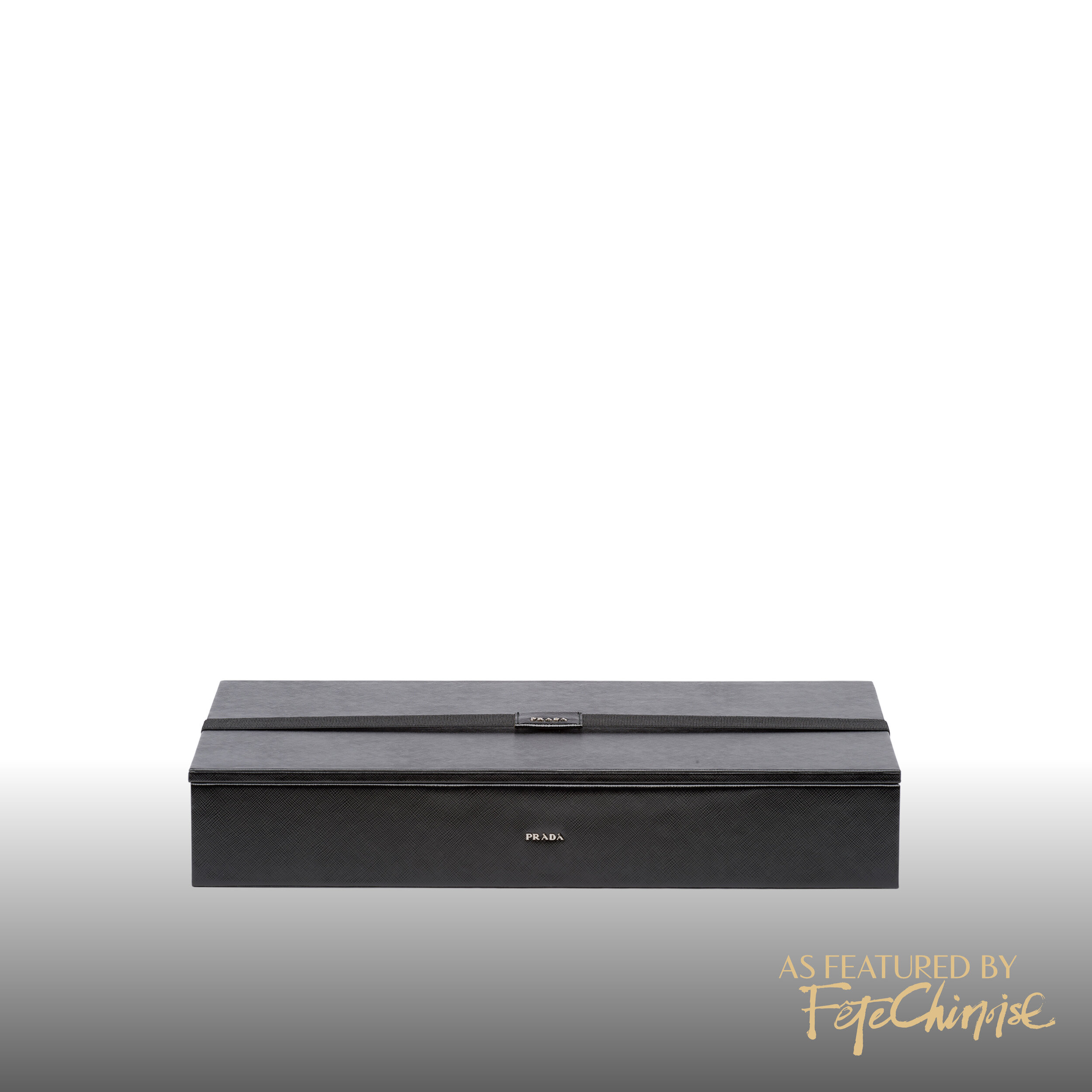Fashion & Tradition: Prada's Saffiano Mahjong Set
Written by Lily Yang
With Files from Prada
What happens when Chinese tradition and contemporary fashion intersect?
We bridge fashion and history with objects and tradition, which allows for preservation of culture. Mahjong (májiàng, 麻將) is a traditional four-player game that has been instilled in Chinese culture for leisure entertainment since the 1890s. Prada’s eye-catching mahjong set, with their famous Saffiano leather finishing on the exterior case, contains a full set of vibrant-toned acrylic resin game pieces.
Here’s our take.
Mahjong’s Growing Popularity
The enticing features of mahjong are the versatility of the house rules and its fine craftsmanship of the meticulously-detailed engravings of each tile. Mahjong comprises of 144 tiles of characters and symbols: bamboo (條), characters (萬), dots (筒), honours (字牌) and ‘flowers’ (花牌). Traditional mahjong sets are hand-carved from precious materials such as bamboo or ivory, with praiseworthy craftsmanship involved in producing each set.
The game was popularized in the late-Qing dynasty and soon spread beyond Asia. In particular, mahjong entered the United States in the 1920s. By 1932, the US market imported more than 1.5 million dollars worth of the game.
The wave of enthusiasm for this game – deemed exotic – also provided both a positive pastime associated with Chinese culture and a negative one. During the period of anti-Chinese sentiment in North America, police saw it as a Chinese gambling activity. Still, mahjong has since captivated many and is passed on from generation to generation. As such, mahjong is deeply embedded in many Asian cultures as well as in North America. It has the power to preserve and revive culture.
“Mahjong has the power to preserve and revive culture.”
On Prada’s Mahjong Set
Prada, the iconic Italian fashion house, featured this stylish mahjong set as a special edition piece in 2018. The exquisite details highlight Prada’s focus on innovation, quality and creativity. How did Prada make this mahjong set extraordinary?
At first glance, Prada uses reds and golds complemented by opaque blacks to provoke liveliness and a vivid contrast in comparison to other more conventional mahjong sets. This colour scheme mimics the aesthetics of traditional Chinese lacquerware, helping audiences appreciate the beauty of Chinese tradition. The visual experience is accentuated by the carefully-engraved tiles, highlighting its vibrancy and the texture which is captivating.
But as one looks closer, one departs from the visual and enters into the realm of sound. The visual excitement evoked by the rich colours of the beautiful Mahjong tiles extends to our other senses. The reds, golds, and blacks entice us to imagine the crisp clashing noises of the tiles when the game is played. The high-contrast colour palette invites us to imagine beyond the visual.
At the intersection of fashion and tradtion
This mahjong set entails more than the captivating craftsmanship and colours. More importantly, it embodies the appreciation of Chinese tradition. Prada, as the fashion pioneer, bridges the resurgence of mahjong tradition into the field of contemporary fashion through combining their creativity and their sense of aesthetic, adding an elevated twist to tradition with their acclaimed minimalist designs and patented Saffiano leather finish.
The cumulation of cultural representation intertwining with contemporary fashion is crucial for us at Fête Chinoise. The only critique we would make is with the finish. Instead of acrylic, Prada could consider using lacquer as the latter would better compliment the overall quality of the set. Lacquer would further elevate and enrich the craftsmanship and durability. Still, Prada’s refreshing twist to Mahjong culture surely preserves and resonates with the nostalgia for Chinese people. The connection of fashion to history and tradition is a crucial representation to embrace and raise awareness of Chinese history and culture. And we are glad to see such intersections between fashion and tradition.















